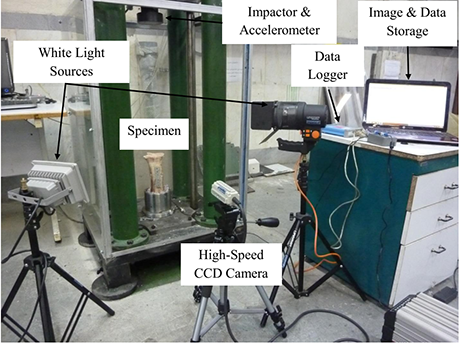Investigating the Composite Orthopedic Plates under Impact Loading
Composite materials are getting more attention in the bioengineering field for development of high-performance implants to enhance the healing of bone fractures, and more efficient function-oriented composite materials such as resorbable/biodegradable and bioactive composites are being developed to meet the required performance characteristics of orthopedic prostheses and implants. In this regard, we decided to preparation of different types of internal fixations made of glass fiber reinforced polypropylene and investigation on their mechanical characterization and in vitro biomechanical experiments. PP/Short Chopped Glass Fiber (PPSCGF), PP/Long Glass Fiber (PPLGF) and PP/Long Glass Fiber Yarn (PPLGFY) were used in fabrication of the fixation plates. The PPSCGF and PPLGF plates were made by the heat-compressing process and Three-dimensional (3D) printing method was used to make the PPLGFY ones.

The constructed fixation plates were tested in the transversely fractured diaphysis of the bovine tibia under axial compression loading and axial impact loading. The overall stiffness, as well as the Von-Mises strain field of fixation plates, were achieved within the stable and unstable fracture conditions. The samples were loaded until failure to determine their failure loads, strains, and modes. Furthermore, impact damping behavior, damage mechanisms, and stress and strain pattern of the composite fixation plate structures were obtained under various types of bone fractures and impact energies. Based on the results, the Glass Fiber/Polypropylene (GF/PP) composite fixation plates provide an interesting new fixation for bone fractures, and they can be appropriate for healing when fractured bones need higher deformation to amplify bone ossification. Due to the ability of stress shielding reduction and providing adequate interfragmentary movement to amplify the bone ossification, the proposed (GF/PP) composite fixation plate serves as a proper offer in orthopedics. It will help the researchers for development of new fixation designs and the clinicians for better patient’s therapy in future.

Selected Journal Papers
- Kabiri, Ali, Gholamhossein Liaghat, and Fatemeh Alavi. "Biomechanical evaluation of glass fiber/polypropylene composite bone fracture fixation plates: Experimental and numerical analysis." Computers in Biology and Medicine (2021): 104303.
- Kabiri, Ali, Gholamhossein Liaghat, Fatemeh Alavi, Hossein Saidpour, Seyyed Kaveh Hedayati, Mehdi Ansari, and Mahmoud Chizari. "Glass fiber/polypropylene composites with potential of bone fracture fixation plates: Manufacturing process and mechanical characterization." Journal of Composite Materials 54, no. 30 (2020): 4903-4919.
